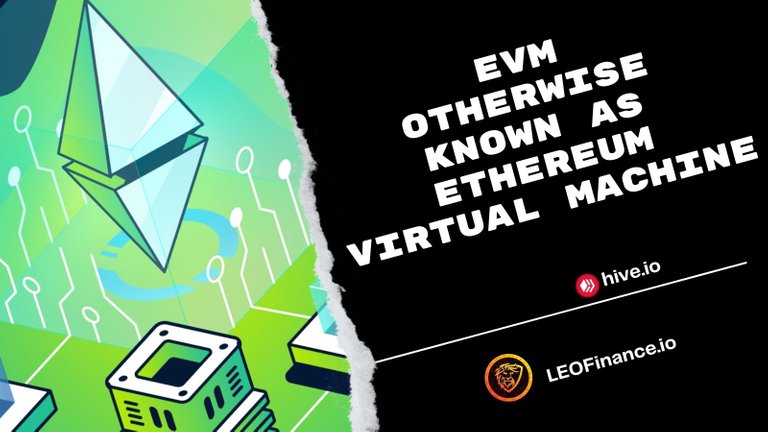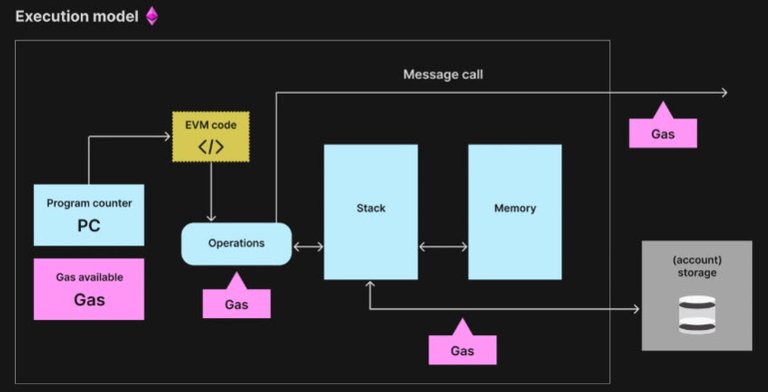
Other chains that use EVMs are Polygon, Binance, Avalanche, Fantom and tons of others blockchains now use this specialized technology. First let’s go over the basics of the EVM for those of you who are unsure about it.
What Does It Mean?
A EVM is essentially a cloud computer which is operated by all of the nodes that contribute to it. The beautiful thing about this is that not any one computer controls it and instead it’s a network effect so if someone wanted to try and shut it down they would have to shut down ALL nodes of it. It’s almost like an internet inside a internet. Each computer is operated by a person in most cases and easy of them contributes to the overall network.

Each of these computers has software attached to them that processes what is known as smart contracts and computing it into the blockchain. Take note of this smart contracts one of the biggest inventions of blockchain in recent years.
The EVM is a specialized computer that processes smart contracts.
What Does It Do?
This software is most commonly written in a coding language called Solidit which is then compiled into bytecode which the computer then reads to make sense of it all. Between these two codes are something known as OpCode which is what the smart contract would use. Commands such as Push, mSTORE,ISZERO, CALL etc. These codes that take place have a cost associated with them and as everyday users see it know as Gas Price. That pesky transaction cost you pay when doing smart contracts and transactions on the blockchain.

How Does It Work?
Above we touched a bit on how these EVMs work but one of the best parts about it is that if other blockchain also use this code it’s much easier to move your project from one to another. That’s why we often see projects launched on one blockchain such as Polygon quickly adapt to launch their project on other blockchains such as Phantom, Avalanche, Ethereum etc. This is actually one of the biggest powerhouses Ethereum has going for it and why it’s such a popular option for many projects.
For example Solana and Cardano instead use a development code called Rust. However with the ton of value slapped into Ethereum and other blockchains that use Solidity a vast majority of projects and developers use.
The EVM process in a single pipeline one transaction in one result before it moves on to the next. We can call these data chains or blocks in the blockchain. This “Blockchain” is a list of transactions that includes the “state” of the evm from before the transaction took place and after the transaction took place otherwise known at the open ledger.
How EVM Is Used
EVM allowed us to have huge revolutions in the crypto space. It took a basic input output blockchain and allowed for what we know as Smart contracts. These smart contracts are used on DeFi platforms primarily but can be used for DApps as well.
Are There Drawbacks?
With any new tech comes issues and while EVM offers up a ton of benefits it doesn’t come without risks. Those risks being higher transaction fees because of the amount of processes that are required to do the contracts.But also new security vulnerabilities as the code is written by a dev there can be bugs and other unforeseen things which we have all witnessed in the past.
The Future
We are seeing how important EVMs are however to the overall blockchain landscape. They provide end users with so many options and more to come along the way. I even question if AI will be let loose and come up with creative new ways to use the blockchain based on interactions by others which is something I believe Microsoft is working on. *pure speculation)
The main focus right now for EVMs at the moment seems to be focused on cross-chain interoperability. This provides other chains to be able to in a way talk to each other via bridges to allow for transactions to happen between chains. This is where DeFi and blockchain bridges have become more and more popular in recent years.
Ethereum is also looking to expand again into a new EVM which will be called eWASM or Ethereum WebAssembly. It’s designed to be modular and platform-independent and said to be a major game changer for Ethereum. This move is currently slated for December 4th 2023 so we could be looking at a bull run later this year and into next year as applications start to develop and take advantage of this major overhaul to one of the largest blockchains that so many others build on top of.
What's clear is you should be ready for some major advancements in blockchian once again sparked by the Ethereum blockchain in the form of their eWASM system which should be more efficient and enable programmers to write in more languages. Time will tell with all things how much this gets adopted but for the most part Ethereum has been on the cutting edge of each bull run and almost always primarily the spark that sets it off.
Posted Using LeoFinance Alpha